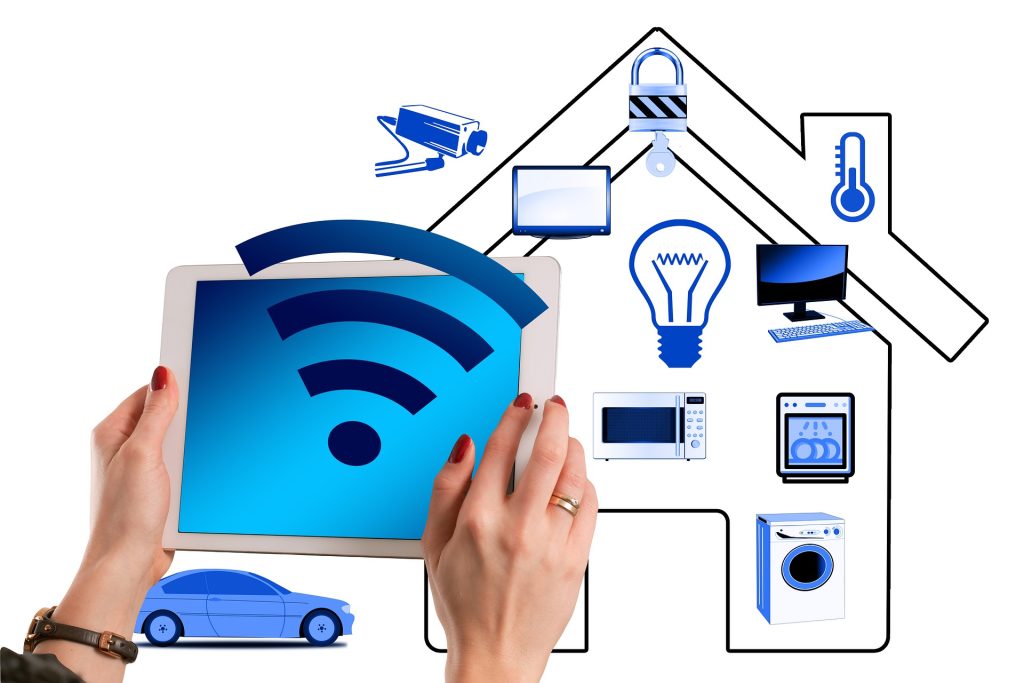It’s important to feel safe and there are many ways to help keep your home secure. We run through the main home security products available to help you pick the right one to keep you, your family and your belongings safe and secure, whether you’re home or away.
Protecting your home is one of life’s most important challenges. While home contents insurance is vital in helping you to replace your belongings after a break in, the truth remains that not everything can be replaced and the sense of personal invasion can often be an upsetting and lingering after-effect.
At the same time, nobody wants to be enveloped by paranoia, hammering bars onto windows, twitching awake at every flash of the security light or spending holidays worrying about burglars having a field day in their absence. Life is just too short. The answer lies with installing home security systems that work away in the background, removing the worries and leaving you free to get on with life.
There are many different options of home security system, varying in price and complexity, from the simple system that sounds a loud alarm to deter intruders, to more advanced systems involving cameras and remote monitoring. Here we run through the four main options available to you, to help you decide which home security system best meets your needs.

This is the traditional option that most people think of when they hear the words “burglar alarm” and remains one of the most popular types. When an intruder trips a bell-only system, a loud alarm will sound. However, this alarm isn’t linked to any monitoring service or to the police, so if you’re away from home, you’ve no guarantee of being notified of the break-in. The hope is that either the alarm will scare the intruder into fleeing before they take anything or that a neighbour will hear it and notify you or the police. Wireless bell-only systems are easy to fit so shouldn’t need a workman to install them nor do they require a contract with a monitoring service. This makes them a more economical option, but you are reliant on diligent neighbours alerting you.

An auto dialler alarm is one that will automatically call a pre-programmed number when the alarm is tripped, so you can be notified straightaway. You can programme a set amount of numbers (usually up to 10) in order of preference and the dialler will call them in sequence. You can buy auto diallers that connect to your landline or, if you don’t have a landline, you can also buy GSM ones that contain a SIM card (similar to the one in your mobile phone). Auto diallers don’t require a monitoring contract, but a GSM auto dialler will need to have enough credit on the SIM to be able to make outgoing calls in the event of an emergency. You should also make sure that there is a decent mobile signal in your area before deciding on a GSM auto dialler.

Smart tech is advancing at an incredible rate, from smart skipping ropes to smart blinds. The variety of tech available for your home alone is staggering, meaning that there are endless ways to combine different home security products together into a comprehensive security system. A smart doorbell allows you to get an alert to your phone, tablet or laptop whenever someone rings it; smart cameras can enable you to monitor your home from anywhere in the world; while smart light bulbs can allow you to turn your lights on and off remotely, ensuring that it always appears as if someone is home. These systems aren’t cheap, but they are customisable to fit your exact needs and separate devices can all be combined to work together through a home assistant such as Google Home or Amazon Echo.

For added security, you may wish to opt for a monitored system. Once a sensor is triggered, the monitoring company will be notified and will call your home looking for a password. If the wrong password is given or there is no answer, they will then either alert a keyholder or the police, depending on which type of service you have. These systems will need to be installed by a professional and will incur a monthly cost or annual fee for the monitoring service. If you have a keyholder monitoring system, the service provider will call your nominated keyholder – who must be within 20 minutes’ drive of your house – to tell them that there is an issue. If you have a police monitoring system, the alarm will be connected to the local police station. Once two sensors are triggered, the police will be notified and will send someone to investigate the alarm. However, this depends on police availability and it’s worth noting that more than three false alarms will mean that police monitoring will no longer be available.
Subscribe to our newsletter to be notified when we publish more useful free guides